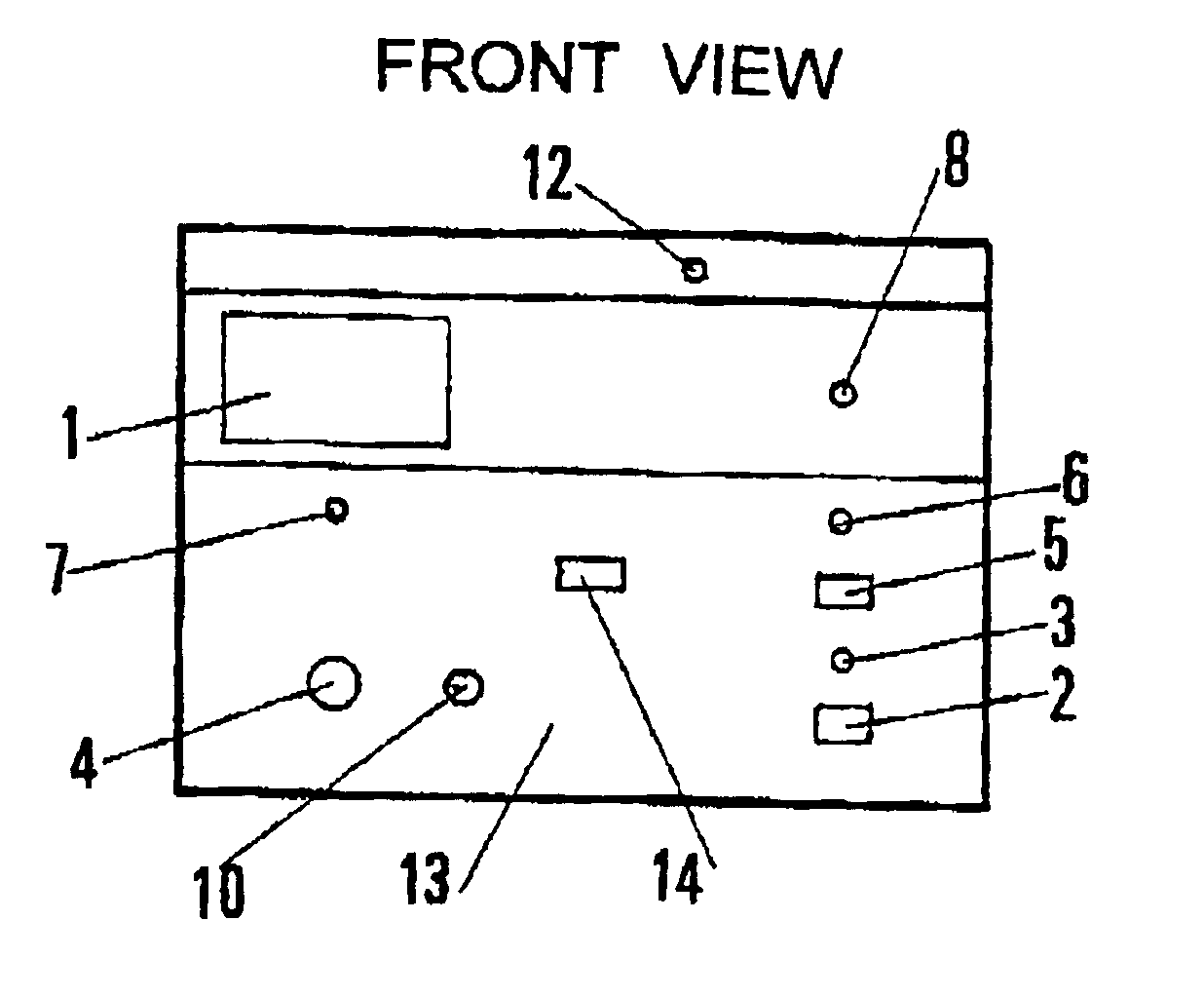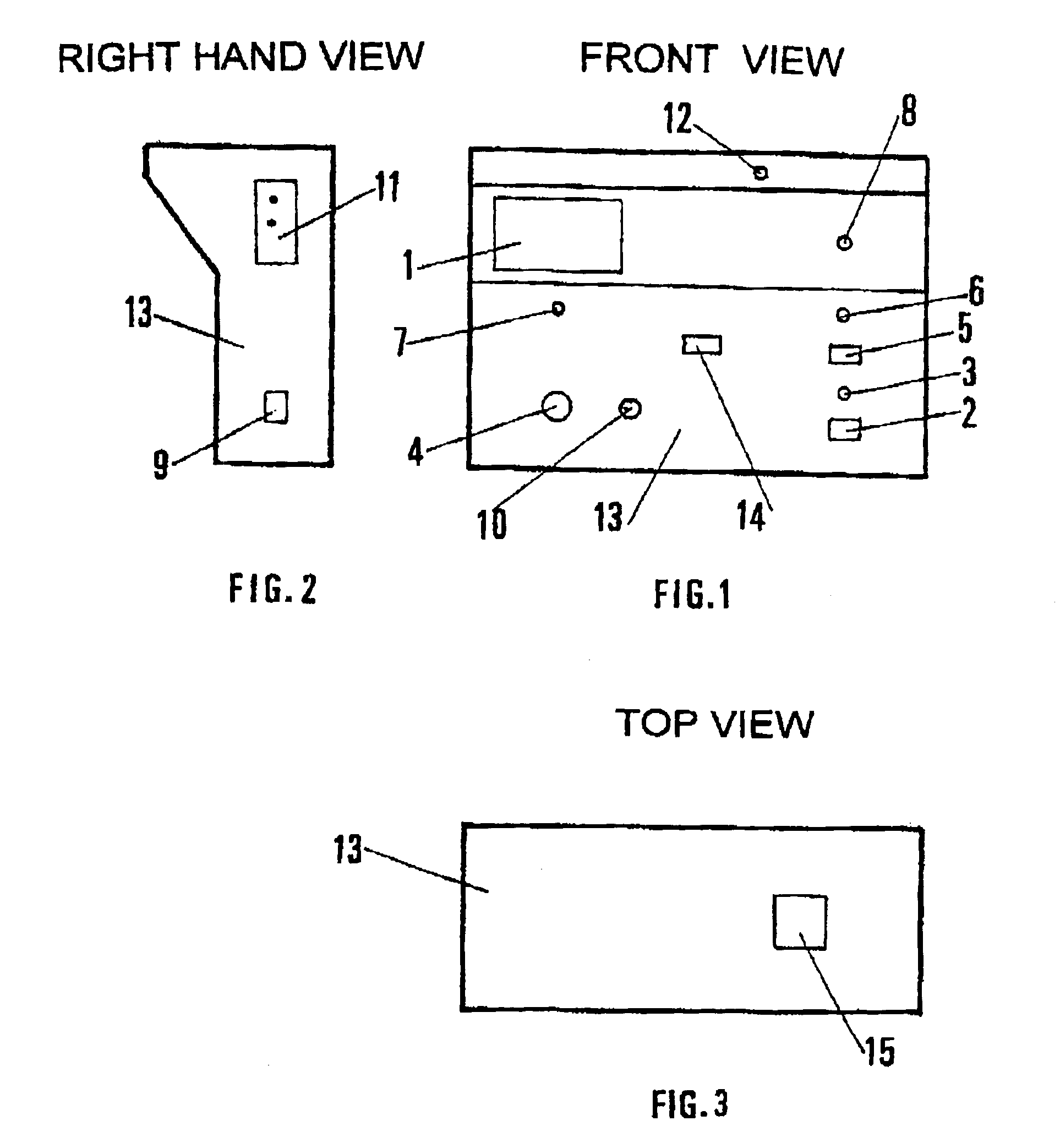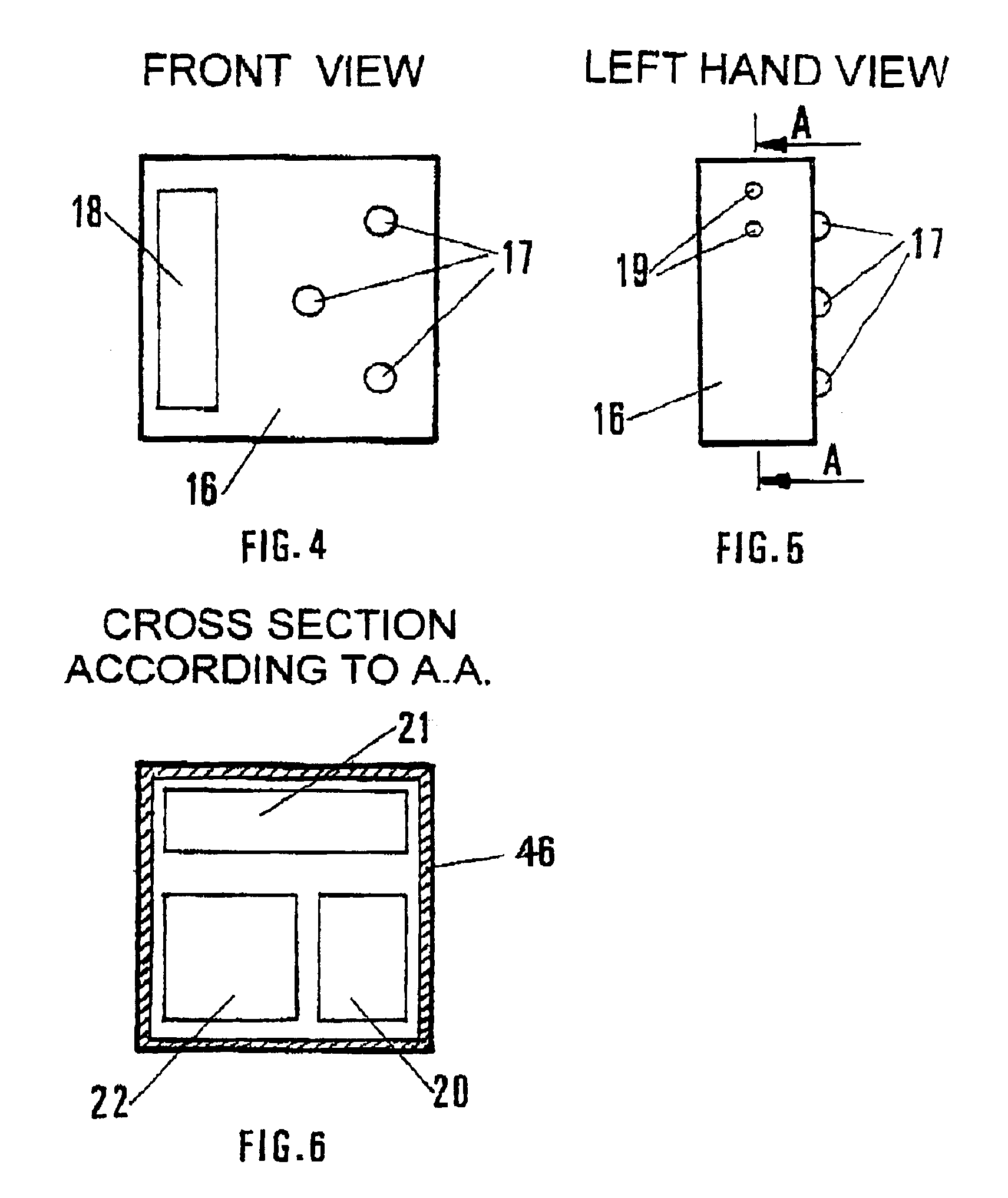Multiple-triggering alarm system by transmitters and portable receiver-buzzer
a multi-triggering, alarm system technology, applied in the direction of electric/electromagnetic visible signalling, visible signalling systems, transmission, etc., can solve the problems of limiting movement, requiring sustained or even constant attention,
- Summary
- Abstract
- Description
- Claims
- Application Information
AI Technical Summary
Benefits of technology
Problems solved by technology
Method used
Image
Examples
Embodiment Construction
[0014]Making reference to these drawings, the following can be seen on the front of the central transmitter box 13 represented in FIG. 1: a programmable clock (1), a pushbutton “alarm” (2) and its electroluminescent indicator LED (3), the microphone (4) for the voice / sound detection and its potentiometer (10) for adjustment of the microphone, a reversing switch (5) to switch the clock (1) and the voice / sound detector (4), a pushbutton (lit up =active) (14) to activate or deactivate the presence detector(s), a bicolor electroluminescent LED (6) that indicates the state of charge of the battery of the portable vibrating-receiver, a bicolor LED (7) (green=charged / red=discharged) to indicate the state of charge of the transmitter(s) battery for the presence detectors and central transmitter, a green mains LED (8), an antenna (12). On the side of the invention's central transmitter box represented in FIG. 2, there is a housing (11) with two golden and fool proofed contacts, which are use...
PUM
 Login to View More
Login to View More Abstract
Description
Claims
Application Information
 Login to View More
Login to View More - R&D
- Intellectual Property
- Life Sciences
- Materials
- Tech Scout
- Unparalleled Data Quality
- Higher Quality Content
- 60% Fewer Hallucinations
Browse by: Latest US Patents, China's latest patents, Technical Efficacy Thesaurus, Application Domain, Technology Topic, Popular Technical Reports.
© 2025 PatSnap. All rights reserved.Legal|Privacy policy|Modern Slavery Act Transparency Statement|Sitemap|About US| Contact US: help@patsnap.com



